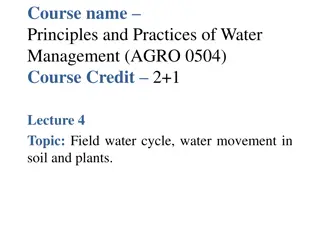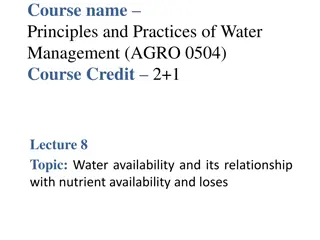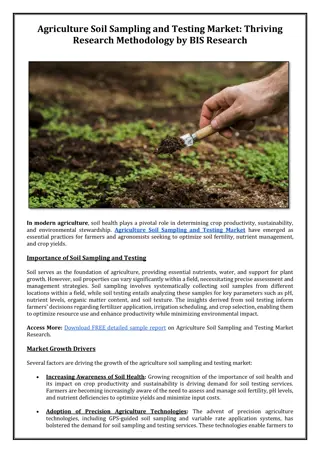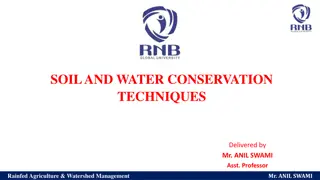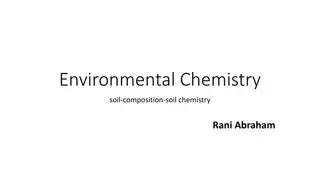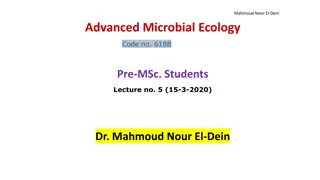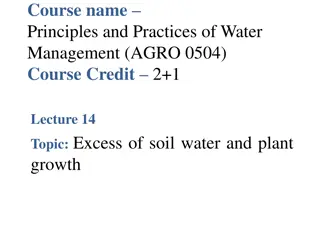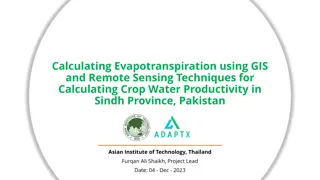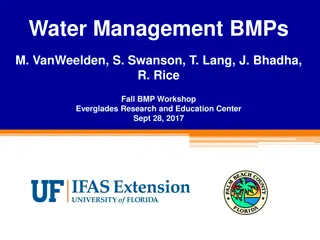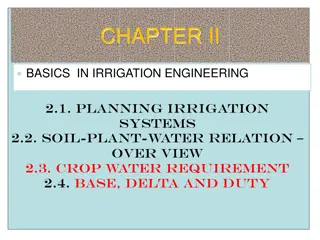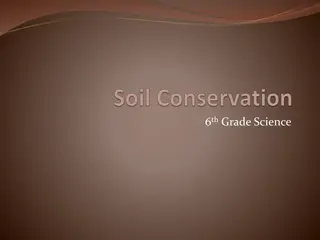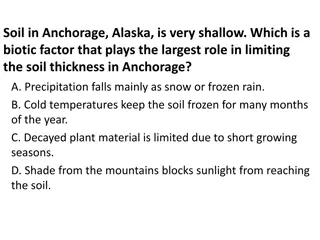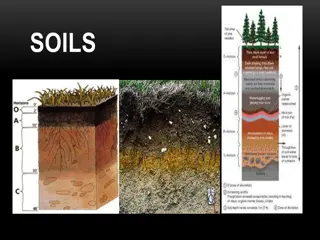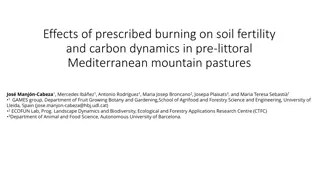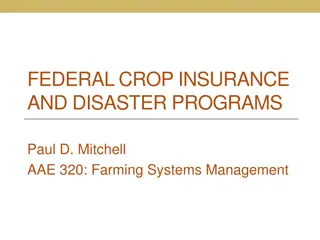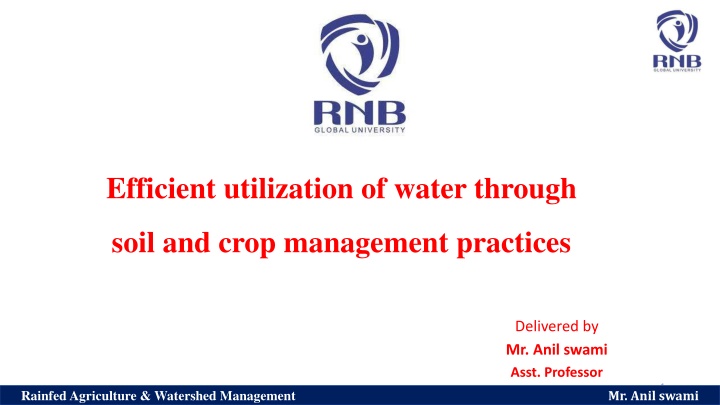
Efficient Water Management for Rainfed Agriculture by Mr. Anil Swami
Learn about efficient water utilization through soil and crop management practices in rainfed areas, as explained by Mr. Anil Swami, Assistant Professor. Explore techniques for water harvesting, contingent crop planning, soil conservation, and nutrient management to enhance agricultural productivity sustainably.
Download Presentation

Please find below an Image/Link to download the presentation.
The content on the website is provided AS IS for your information and personal use only. It may not be sold, licensed, or shared on other websites without obtaining consent from the author. If you encounter any issues during the download, it is possible that the publisher has removed the file from their server.
You are allowed to download the files provided on this website for personal or commercial use, subject to the condition that they are used lawfully. All files are the property of their respective owners.
The content on the website is provided AS IS for your information and personal use only. It may not be sold, licensed, or shared on other websites without obtaining consent from the author.
E N D
Presentation Transcript
Efficient utilization of water through soil and crop management practices Delivered by Mr. Anil swami Asst. Professor 1 Mr.Anil swami Mr. Anil swami Rainfed Agriculture & Watershed Management Rainfed Agriculture & Watershed Management
Objective:- Tell the soil and climatic conditions prevalent in rainfed areas. Interpret various water harvesting techniques and their efficient utilization. Apply contingent crop planning for aberrant weather conditions. Examine the seasonal rainfall and different types of watershed and its components. Select soil and water conservation techniques to avoid their losses. 2 Mr.Anil swami Rainfed Agriculture & Watershed Management
Efficient utilization of water through soil and crop management practices Efficient utilization of rainwater through soil management practices: In rainfed agriculture, no other input can perhaps enhance the yield without effectively tackling of the rainfall aberration related sub-optimal moisture availability by managing both soil and rainwater. Mr.Anil swami Rainfed Agriculture & Watershed Management
The important practices are 1. Avoiding and rectifying soil degradation The major forms of soil degradation are water and wind erosion and deterioration of both physical (crusting, compaction, waterlogging) and chemical (Loss of organic matter, acidification, salinization, pollution etc.). Soil crusting and compaction in arable soils may be rectified by cultivation, Increasing soil organic matter content by incorporating organic manures and pond sediments improve the stable soil aggregates. Salinization can be controlled by leaching the surface salts with rainwater irrigation. In alkali soils, application of gypsum resulted in increased infiltration rate. The best method of avoiding waterlogging is by providing surface drainage. Mr.Anil swami Rainfed Agriculture & Watershed Management
2. Managing soil nutrients If yields are to be maintained and the soils used to produce crops on a continuing basis, a method by which N, P, K and other nutrients can be replaced has to be adopted. If yields are to be maintained and the soils used to produce crops on a continuing basis, a method by which nitrogen, phosphorus, potassium and other nutrients can be replaced has to be found. Mr.Anil swami Rainfed Agriculture & Watershed Management
Nitrogen can be fixed by natural and symbiotic fixation like Rhizobia in legumes, Azolla in rice and by using biofertilizers. Maintaining P, K and other nutrients normally requires the use of inorganic fertilisers. Organic manures (FYM, compost, green manures, farm wastes) should be used for balanced supply of essential nutrients as well as having additional beneficial effects on the soil. Mr.Anil swami Rainfed Agriculture & Watershed Management
3. Managing soil physical conditions Conservation tillage with lighter machinery is the most effective way to alter and improve soil physical conditions. Under Indian conditions, satisfactory soil physical condition of rainfed soils can be maintained by deep ploughing once in 3 to 5 years, application of bulky organic manures in alternate years and shallow inter-cultivation for weed management. Mr.Anil swami Rainfed Agriculture & Watershed Management
4. Improving soil moisture regime There is no practical method by which available Water Holding Capacity of a soil can be increased. Addition of silt, clay, organic matter etc. increases field capacity and also raises wilting point leading to marginal increase in available WHC. If good soil is available, 1:1:1 ratio of soil, organic matter and sand make an excellent mixture. Mr.Anil swami Rainfed Agriculture & Watershed Management
If the soil is sand, a mixture of 1:1:1 with soil, organic matter and clay soil is suitable. Never mix the heavy sticky clays in these soils. Contour farming and sub-surface barriers helps to reduce runoff as well as soil loss. Mr.Anil swami Rainfed Agriculture & Watershed Management
5. Managing soil organic matter and soil biological conditions Organic matter is a direct contributor to crop nutrition of crops and its role in stabilising soil aggregates and supporting the soil organisms which create the pores through which air and water move, has already been mentioned. In addition, it hinders the formation of insoluble complexes of iron and aluminium with phosphate in acid soils thus avoiding reduction in the amount of phosphate available to plants. Mr.Anil swami Rainfed Agriculture & Watershed Management
Activities that promote the accumulation and supply of organic matter, such as use of FYM, crop rotation, cover crops and those that reduce decomposition rates, such as reduced and zero tillage, leads to an increase in the organic matter content in the soil and its biological activities. Mr.Anil swami Rainfed Agriculture & Watershed Management
12 Mr.Anil swami Mr.Anil swami Rainfed Agriculture & Watershed Management Rainfed Agriculture & Watershed Management

